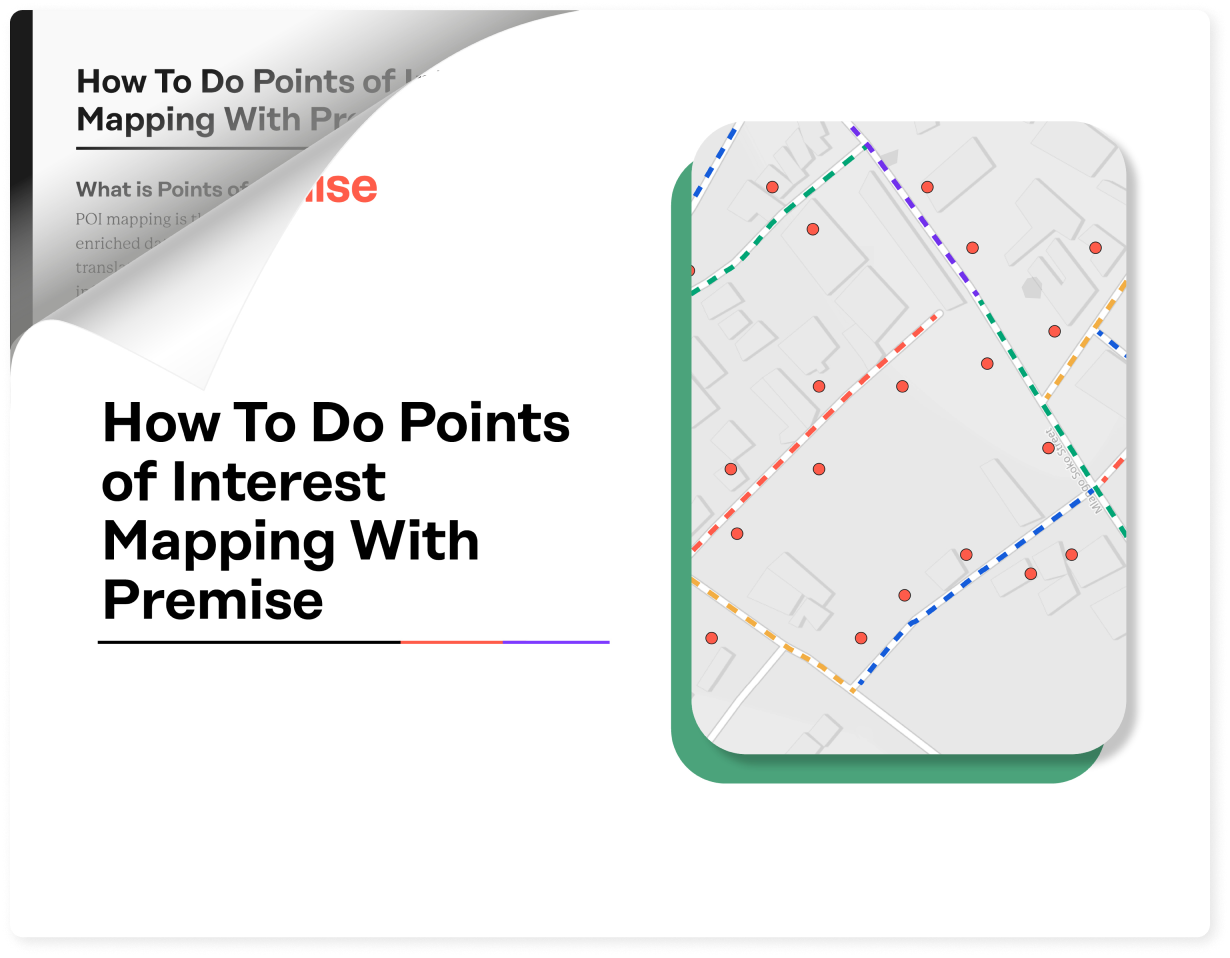How To Use Premise For Points of Interest Mapping
![]()
Why Is Points of Interest (POI) Mapping Critical for Development and Humanitarian Aid Programs?
International development and humanitarian aid programs face many challenges that are inherently spatial. Whether conducting micro-planning for immunization delivery or monitoring monthly changes in food prices in different markets around the world, collecting and incorporating spatial data into nearly all phases of the program cycle becomes essential. Moreover, elevating the spatial element in the questions these organizations are asking can lead to deeper insights about people’s relationships with place and how it affects development outcomes.
By incorporating spatial data into decision-making for development and humanitarian aid programs, organizations can:
- Gain enhanced understanding. Examining spatial data allows for a more intuitive and interactive understanding of the relationship between people, places, and things, leading to more meaningful insights and improved decision-making.
- Identify trends and patterns. The collection and analysis of spatial data reveals patterns that may be difficult to discern in traditional data tables or charts.
- Enhance resource allocation. Spatial data can help identify areas of need and prioritize efforts and resources where they are most needed.
- Improve communication. Maps and other visualizations make data more accessible and engaging, which helps build support and understanding for development programs.
Premise’s mapping solutions enable organizations to collect spatially and temporally enriched data from real-world observations and translate them into useful location-based information. Our solutions can meet your organization’s spatial data needs across scales—from the hyperlocal to the global—and across social, cultural, physical, and political boundaries.
How Does Premise Do POI Mapping?
Premise offers two primary solutions for mapping: Discover and Validate & Augment. Discover is more appropriate for users who are seeking to map places from scratch or are starting with secondary spatial or nonspatial data sources, including data from historical records, textual or table-based datasets, web scraping, and more. Validate & Augment is more appropriate for users who have existing spatial data records (i.e., know where their places are) but require more detailed data or updated details about the attributes of that place.
Discover
Using Premise to discover places and populations begins by determining whether you are starting from scratch or not. Partners who seek to map locations from scratch should start by tasking our Contributors in a given geographic area with locating a type or category of place that is convenient to them. Partners can then fill in the gaps by subsequently tasking Contributors with visits to smaller, more defined, search areas (e.g. a specific city block or defined neighborhood).
Premise partners who are starting with location data derived from secondary sources, like results from web scraping or other textual analysis (any location data that is obtained from sources other than field visits), should upload their data in Premise and create tasks for Contributors to visit those locations and gather additional attribute data. This is generally the most efficient way to map places as users can then fill in gaps without needing to map so many places from scratch.
Validate & Augment
Many Premise partners have location datasets that are unverified, out of date, or missing important attributes. This could be criteria like the name of a place, the hours of operation of a business, or whether a school has latrines.
Partners who have conducted geospatial analysis and have a need to validate their analysis can also use Validate & Augment to verify their analytical output. In this case, Premise can be used to confirm false positives or false negatives in satellite imagery analysis and collect additional attributes from the location to better inform and/or train their analysis. Users who may benefit from an “eyes on the ground” perspective should upload their spatial data outputs (or a subset thereof) to Premise and work with their Premise Customer Operations team to define their most pressing needs for validating, updating, or enriching their data.
